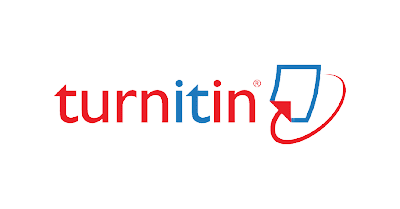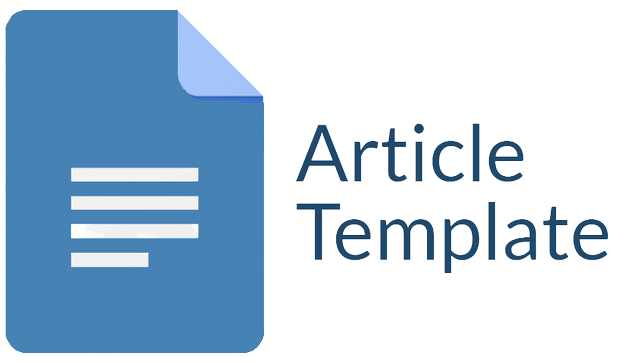IMPLEMENTASI MODEL PEMBELAJARAN BERBASIS (PROJECT BASED LEARNING – PJbL) UNTUK MENINGKATKAN KETERAMPILAN MAHASISWA PADA MATA KULIAH ILMU ASHWAT DI PROGRAM STUDI PENDIDIKAN BAHASA ARAB FKIP UNIVERSITAS JAMBI
Abstract
Penelitian ini bertujuan untuk mengetahui kemampuan mahasiswa dalam memahami materi tentang Ilmu Ashwat dan menulis artikel ilmiah, dengan menggunakan model pembelajaran berbasis Project Based Learning (PJbL) adapun metode yang digunakan dalam penelitian ini adalah penelitian tindakan kelas dengan pendekatan deskriptif kulaitatif dan hasil yang ditemukan dalam penelitian implementasi model pembelajaran Project Based Learning (PJbL) dalam mata kuliah Ilmu Ashwat menunjukkan hasil yang baik ini didapatkan dari hasil nilai rata-rata mahasiswa. Pada pre test 72,71 dan hasil pos tes 1 71 dan hasil pos test 2 80. Dan kecenderungan hasil belajar meningkat, dan dapat disimpulkan bahwa implementasi model pembelajaran Project Based Learning (PJbL) berhasil dalam meningkatkan pemahaman mahasiswa pada mata kuliah Ilmu Ashwat Program Studi Pendidikan Bahasa Arab
Downloads
References
Ali, M., Sanusi, A., Maulani, H., Saleh, N., Khalid, S. M., Supriadi, R., & Al Farisi, M. Z. (2023). Investigating the Arabic/f/Pronunciation: A Comparative Analysis of Acoustic Phonetics. Al-Ta'rib: Jurnal Ilmiah Program Studi Pendidikan Bahasa Arab IAIN Palangka Raya, 11(2), 181-196. https://doi.org/10.23971/altarib.v11i2.7234
Afandi, M., Chamalah, E., & Wardani, O. P. (2013). Model dan Metode Pembelajaran di Sekolah. In Perpustakaan Nasional Katalog Dalam Terbitan (KDT) (Vol. 392, Issue 2). https://doi.org/10.1007/s00423-006-0143-4
Almulla, M. A. (2020). The Effectiveness of the Project-Based Learning (PBL) Approach as a Way to Engage Students in Learning. SAGE Open, 10(3), 215824402093870. https://doi.org/10.1177/2158244020938702
Aqib, Z. (2013). Model-Model, Media dan Strategi Pembelajaran Kontekstual (inovatif). Bandung: CV Yrama Widya.
Ahmad Abdullah Basyir, (1971). Mudzakarotu Ta’lim al-Kalam (al-Muhadatsah), Saudi Arabiyah Li- Daurat at-Tadribiyat al-Maksyafah
Daryanto dan Rahardjo, M. (2012). Model Pembelajaran Inovatif. Yogyakarta: Gava
Hadiyanto, Wulandari, S., Wilyanti, L. S., Supian, Afria, R., & Nazarudin. (2021). The Effective Use of Full Online Learning to Replace Classroom Learning During the Covid-19 Pandemic. International Journal of Current Research and Review, 23–32. https://doi.org/10.31782/IJCRR.2021.SP205
Isriani & Puspitasari, D. (2015). Strategi Pembelajaran Terpadu: Teori, Konsep & Implementasi. Yogyakarta: Relasi Inti Media Group
Jauhar, Nasruddin Idris. (2015). Fonologi Bahasa Arab untuk Penutur Indonesia. Sidoarjo: CV Lisan Arabi
Kemendikbud. (2013). Permedikbud Nomor 65 Tahun 2013 Tentang Standar Proses. Jakarta: Kemdikbud.
Kristanti, Y., Subiki, S., & Handayani, R. (2016). Model Pembelajaran Berbasis Proyek (Project Based Learning Model) Pada Pempelajaran Fisika di SMA. Jurnal Pembelajaran Fisika, 5(2), 122–128. https://jurnal.unej.ac.id/index.php/JPF/article/view/3958
Kusadi, N. M. R., Sriartha, I. P., & Kertih, I. W. (2020). Model Pembelajaran Project Based Learning Terhadap Keterampilan Sosial dan Berpikir Kreatif. Thinking Skills and Creativity Journal, 3(1), 18–27. https://doi.org/http://dx.doi.org/10.23887/tscj.v3i1.24661
Matsna, Moh & Mahyudin, Erta. (2014). Pengembangan Evaluasi dan Tes Bahasa Arab.Tangerang: Alkitabah
Media. Fathurrohman, M. (2016). Model Pembelajaran Inovatif: Alternatif desain PembelajaranYang Menyenangkan. Yogyakarta: Ar-Ruzz Media Group
Mu’in, Abdul. (2004). Analisi Kontrastif, Bahasa Arab dan Bahasa Indonesia (Tela’ah Terhadap Fonetik dan Morfologi), Jakarta: Pustaka Al Husna Baru.
Mulyasa, E. (2014). Implementasi Kurikulum 2013. Bandung: PT Remaja Rosdakarya
Muslich, Masnur, (2008). Fonologi Bahasa Indonesia, Tinjauan Deskriptif Sistem Bunyi Bahasa Indonesia, Jakarta: Bumi Aksara
O’Brien. R. (2001). An overview of the Methodological Approach of Action Research. Toronto: Faculty of Information Studies.
Pemerintah Republik Indonesia. (2003). Undang-Undang Republik Indonesia Nomor 20 Tahun 2003 Sistem Pendidikan Nasional. Lembaran Negara Republik Indonesia Tahun 2003 Nomor 4301: Jakarta.
Nasution, Ahmad Sayuti, (2006). Bunyi Bahasa. Ciputat: UIN Jakarta Press
Sari, I. K. (2018). The effect of problem-based learning and project-based learning on the achievement motivation. Jurnal Prima Edukasia, 6(2), 129–135. https://doi.org/10.21831/jpe.v6i2.17956
Saefudin, A & Berdiati, I. (2014). Pembelajaran Efektif. Bandung: PT Remaja Roskadarya
Sugiono. (2015). Metode Penelitian Tindakan (Action Research). Prosiding Seminar Nasional Jurusan PGSD FIP UNP, 1(2015), 1–120. http://ejournal.unp.ac.id/index.php/prosidingpgsd/article/view/4846
Susilawati, A., Hernani, H., & Sinaga, P. (2017). The Application of Project-Based Learning Using Mind Maps to Improve Students’ Environmental Attitudes towards Waste Management in Junior High Schools. International Journal of Education, 9(2), 120–125. https://doi.org/10.17509/ije.v9i2.5466
Universitas Jambi, (2020). Rencana Strategis universitas Jambi 2020-2024. Jambi: Universitas Jambi
Yamin, Y., Permanasari, A., Redjeki, S., & Sopandi, W. (2020). Project Based Learning to Enhance Creative Thinking Skills of the Non-Science Students. JHSS (Journal Of Humanities And Social Studies), 4(2), 107–111. https://doi.org/10.33751/jhss.v4i2.2450
Yustina, Syafii, W., & Vebrianto, R. (2020). The effects of blended learning and project-based learning on pre-service biology teachers’ creative thinking skills through online learning in the COVID-19 pandemic. Jurnal Pendidikan IPA Indonesia, 9(3), 408–420. https://doi.org/10.15294/jpii.v9i3.24706
Copyright (c) 2025 Neldi Harianto, Mar'atun Sholiha, Khairisti Iis Handayani

This work is licensed under a Creative Commons Attribution-ShareAlike 4.0 International License.
Jurnal allows anyone to compose, correct, and do derivative works, even for commercial purposes, as long as they credit for the original work. This license is the freest. It is recommended for maximum distribution and use of licensed material.
The submitted paper is assumed not to contain any proprietary materials that are not protected by patent rights or patent applications; The responsibility for technical content and protection of proprietary materials rests with the authors and their organizations and not the responsibility of journal or its editorial staff. The primary (first/appropriate) author is responsible for ensuring that the article has been viewed and approved by all other authors. The author's responsibility is to obtain all necessary copyright waivers to use any copyrighted material in the manuscript before submission.
Jurnal Pendidikan, Sains dan Teknologi allows the author(s) to hold the copyright without restrictions and allow the author(s) to retain publishing rights without restrictions. Jurnal Pendidikan, Sains dan Teknologi CC-BY-SA or an equivalent license as the optimal license for the publication, distribution, use, and reuse of scholarly work. Jurnal Pendidikan, Sains dan Teknologi allows the author(s) to hold the copyright without restrictions and allow the author(s) to retain publishing rights without restrictions. Jurnal Pendidikan, Sains dan Teknologi CC-BY-SA or an equivalent license as the optimal license for the publication, distribution, use, and reuse of scholarly work.
In developing strategy and setting priorities Jurnal Pendidikan, Sains dan Teknologi recognize that free access is better than priced access, libre access is better than free access, and libre under CC-BY-SA or the equivalent is better than libre under more restrictive open licenses. We should achieve what we can when we can. We should not delay achieving free in order to achieve libre, and we should not stop with free when we can achieve libre.
Jurnal Pendidikan, Sains dan Teknologi is licensed under a Creative Commons Attribution-ShareAlike 4.0 International License.
You are free to:
- Share a copy and redistribute the material in any medium or format
- Adapt a remix, transform, and build upon the material for any purpose, even commercially.
- The licensor cannot revoke these freedoms as long as you follow the license terms.






